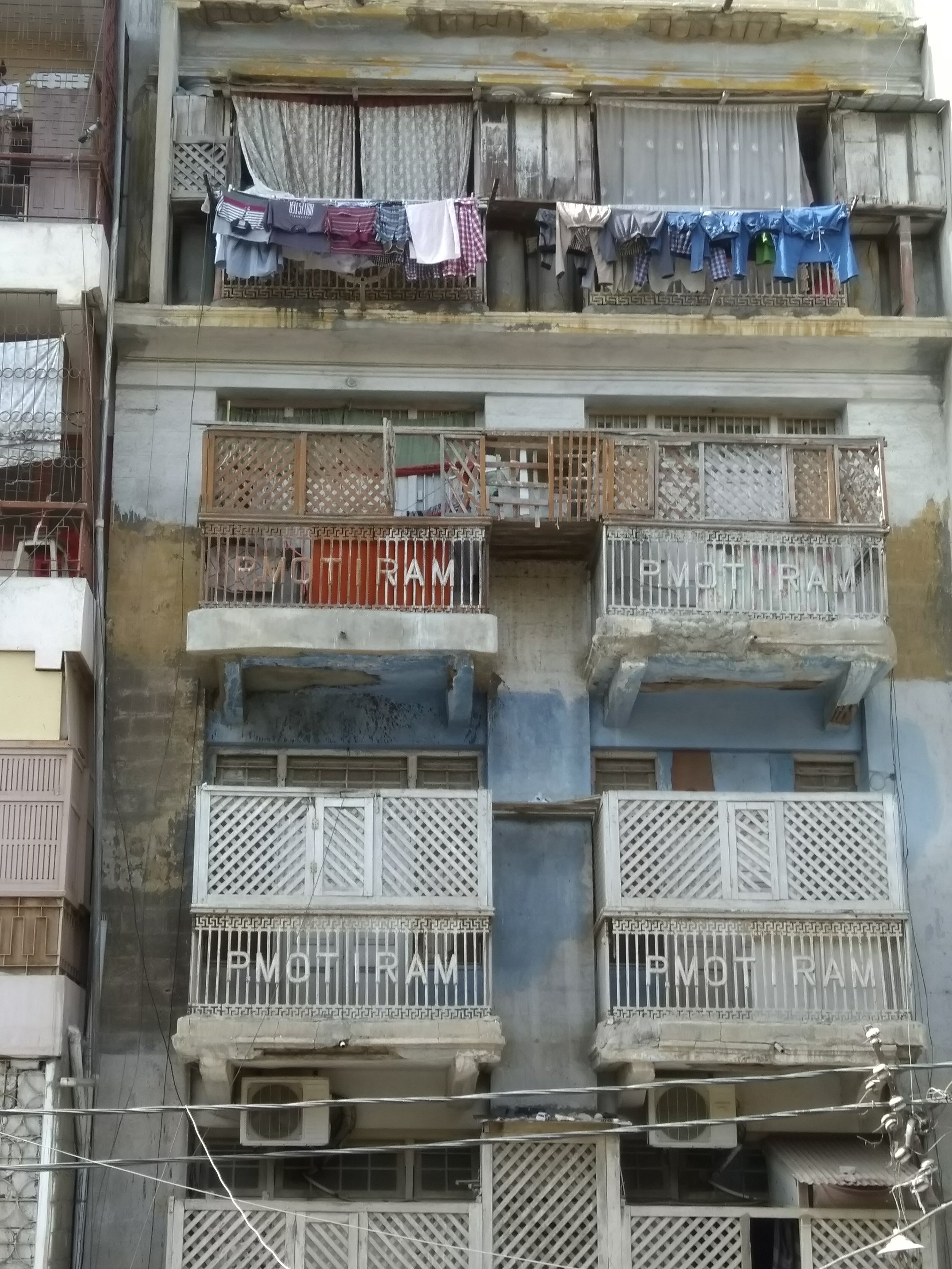Written by Ali Safdar
Lahore University of Management Sciences, Lahore
The city of Karachi slept soundly at 8 am in the morning. The sun however was fresh and working at full strength. Few wandering souls on the streets of Old Town Karachi were exposed to the full brunt of it. Amongst them was our group of internees which was huddled around Ms. Shaheen Nauman, the official guide of 'Heritage Walk' conducted by Pakistan Chowk Community Centre. We started the walk at Pakistan Chowk near Sarangati, went to M.A Jinnah road and ended the walk at Meghraj Building. The area used to be an integral part of Karachi several decades ago. The buildings are testament to the forgotten but integral presence of Hindus in the city. Hostels such as Sarangati or Sewakunj were open for everyone regardless of their religion.
This shows that Hindu presence was not an oppressive one and did not create feelings of animosity. It also shows that Hindus played a greater role in the prosperity of Karachi as compared to today. The Hindu community in Karachi was a large one and other communities also called Karachi their home before Partition. However, after partition and its horrors many non-Muslims left the country and were replaced by the Muhajirs from India. This marked the beginning of a nation where Muslims could freely express themselves and their religion. It also marked the beginning of reconstruction of the past and prioritizing religion in the public sphere.
Towards the end of our walk we entered Meghraj building. The exterior was like most buildings in the area, dilapidated dusted, ignored. However, the respite from the heat was welcomed by all. The Opera style staircase at the entrance was a pleasant surprise and piqued the curiosity of the visitors. Climbing the steps, hands racing along the century old dusty handrail we entered a spacious, haphazard space. It used to be a courtyard whose open roof had been covered with concrete and rooms of various shapes and sizes were built upon it. The top walls were embroidered with carvings of Hindu deities and a small corner room held remnants of an old, now unused Hindu worship room.
Perched on that wall covering one of the deities was a board bearing Qur'anic ayah. The picture symbolized the reconstruction of the past for me. Ignoring, and even effectively trying to erase the sizeable presence of Hindus from Karachi's past began immediately after Partition. Such erasure would ensure that the today's Pakistani would consider their origins, an integral part of their identity, to be solely associated with Islam. This is something that is a major aspect that fuels the divide between Pakistan and India
Opposite to Meghraj building is Yahya Manzil. On the bars outside the windows its true name 'P. Moti Ram' was displayed. Having a Hindu name nowadays would not help getting residents. Most residents would not wish to stay in a building that is in anyway associated with Hindus. This is a result of the reconstruction of the past.
This aversion again points out to the unease or rather unawareness people of Karachi experience. The Hindu community were an integral part of Karachi and a component of the definition of a 'Karachiite'. They played a big role in helping this city become a prosperous one. Acknowledging their role and presence in the history of our land is our responsibility. It may also lead us to introspect our own history and look at it more critically. Such introspection might lead in reducing the animosity between Pakistanis and Indians. More importantly, it might have a positive impact in the way we interact with our Sindhi Hindu community.



